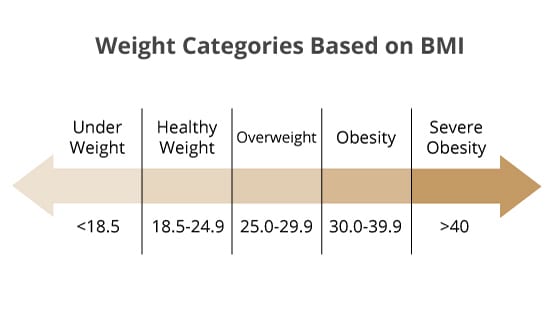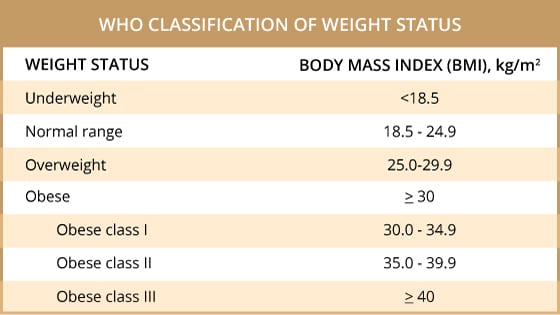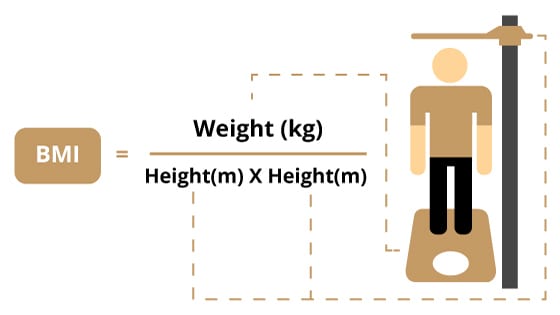
BMI – Body Mass Index – Defination, Calculation & Limitations
Are you familiar with Body Mass Index (BMI)? You might be surprised to learn that this widely-used metric for assessing body size and health has its limitations and can sometimes be misleading. In this comprehensive guide, we’ll explore the history and development of BMI, delve into its criticisms and limitations, and discuss alternative methods for evaluating body composition and overall health. From Arnold Schwarzenegger’s “obese” BMI during his bodybuilding prime to the importance of considering factors like body fat percentage and cardiorespiratory fitness, join us as we uncover the truth behind BMI and what it really means for your health and well-being
Table of Contents:
Last Updated on April 24, 2024
Body Mass Index (BMI)
BMI stands for “body mass index”. It’s a technical-sounding term that simply refers to a person’s body size based on their weight and height. Don’t be intimidated by the jargon, the concept is really easy to understand.
Body Mass Index (BMI) is a widely used metric to assess a person’s body size based on their weight and height. It is calculated by dividing a person’s weight in kilograms by the square of their height in meters. While BMI is a simple and convenient tool, it has its limitations and should not be the sole determinant of an individual’s health and body composition.
History and Development of BMI:
BMI was first introduced in the 19th century by Belgian polymath Adolphe Quetelet as a way to quantify the relative weight of individuals in large populations. Over time, BMI gained popularity and became a standard measure in healthcare and public health settings.
Why Do We Calculate Body Mass Index?
You’re probably wondering why would it be necessary to go through the trouble of calculating BMI when you can just use a person’s weight to convey their body size? After all, if someone weighs 600 lbs, you probably have a pretty good sense of their body size. It’s pretty big!
But, wait. Imagine if I told you that someone weighs 200 lbs. Would you really be able to say whether this person was struggling with their weight? I mean 200 lbs sounds kind of big doesn’t it? You probably don’t know many people who weigh more than 200lbs and are “skinny”. Right?
Well, the answer depends to some degree on the height of the person.
If you’re talking about your tiny 91-year-old grandmother whose less than 5 feet tall, then a weight of 200 lbs almost certainly means she’s struggling with her weight. On the other hand, if you’re talking about an NBA basketball player who is 7ft 6in tall then 200 lbs would actually be considered underweight.

The Problem With Body Mass Index
Unfortunately, Body Mass Index is not perfect and can sometimes be quite misleading.
Limitations and Criticisms of BMI:
BMI does not account for factors such as muscle mass, bone density, and body shape, which can significantly impact an individual’s health and body composition. For example, a highly muscular athlete may have a high BMI but be in excellent health, while an overweight person with low muscle mass and high body fat may have a lower BMI but be at greater risk for health problems.
Examples of Misleading BMI Categories:
- Arnold Schwarzenegger, during his bodybuilding prime, had a BMI of 31, placing him in the obese range, despite being in excellent physical condition.
- Professional basketball players often have high BMIs due to their large muscle mass and height, but they are typically not considered unhealthy.
Alternative Methods of Assessing Body Composition and Health:
While BMI remains a commonly used metric, it is essential to consider other factors when evaluating an individual’s health and body composition. These may include:
- Body fat percentage: Measured through methods like bioelectrical impedance analysis, skinfold calipers, or DEXA scans.
- Waist circumference: A measure of abdominal fat, which is associated with an increased risk of metabolic disorders.
- Cardiorespiratory fitness: Assessed through activities like running, cycling, or swimming, which provide insight into an individual’s overall health and fitness level.

While many experts continue to argue over the merits of using Body Mass Index, the term remains the most commonly used shorthand for conveying body size. It’s easy to calculate and requires minimal information.
Understanding the Numbers
The table below shows you what the various Body Mass Index numbers mean. As you can see, obesity kicks in at a BMI of ≥30.


How do you calculate body mass index?
The formula for BMI is simply:

To be honest, no one calculates BMI longhand. There are tons of BMI calculators online where you can just enter your weight and height and receive your BMI.
Conclusion:
BMI is a useful tool for estimating body size and identifying potential health risks, but it should not be the sole determinant of an individual’s health and body composition. By considering additional factors and adopting a more holistic approach, we can gain a more accurate and comprehensive understanding of a person’s overall health and well-being.
Click here to calculate your BMI.
FAQs related to the primary topic of BMI
Q: How does BMI differ from body fat percentage?
A: BMI is a simple ratio of weight to height, while body fat percentage measures the proportion of fat mass to total body mass, providing a more accurate assessment of body composition.
Q: Can BMI accurately predict health risks for all individuals?
A: No, BMI does not account for factors like muscle mass, bone density, and body shape, which can impact health risks. It should be used in conjunction with other health indicators for a more comprehensive assessment.
Q: How does BMI change during pregnancy?
A: BMI typically increases during pregnancy due to the growth of the fetus, placenta, and amniotic fluid. It is not an accurate measure of health during pregnancy and should be monitored by healthcare professionals.
Q: Is BMI useful for tracking weight loss progress?
A: While BMI can provide a general indication of weight loss, it may not accurately reflect changes in body composition. Tracking other metrics like body fat percentage and waist circumference can offer a more comprehensive view of progress.
Q: Can BMI be used to determine ideal weight for athletic performance?
A: No, BMI is not a suitable measure for determining ideal weight for athletic performance. Athletes often have higher muscle mass and lower body fat, which can result in a higher BMI despite being in optimal physical condition. Specific sport-specific body composition goals should be set in consultation with coaches and sports nutritionists.





